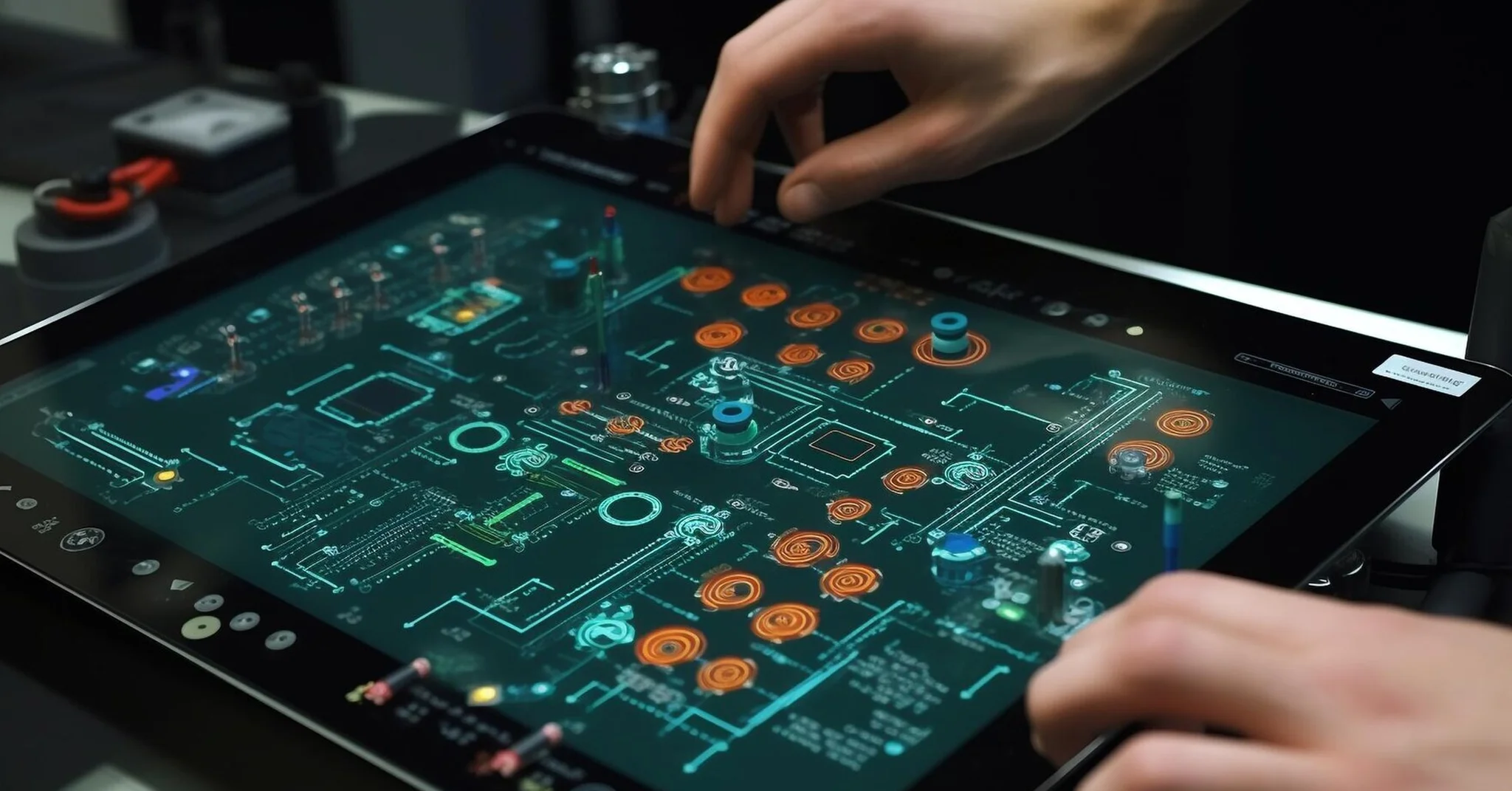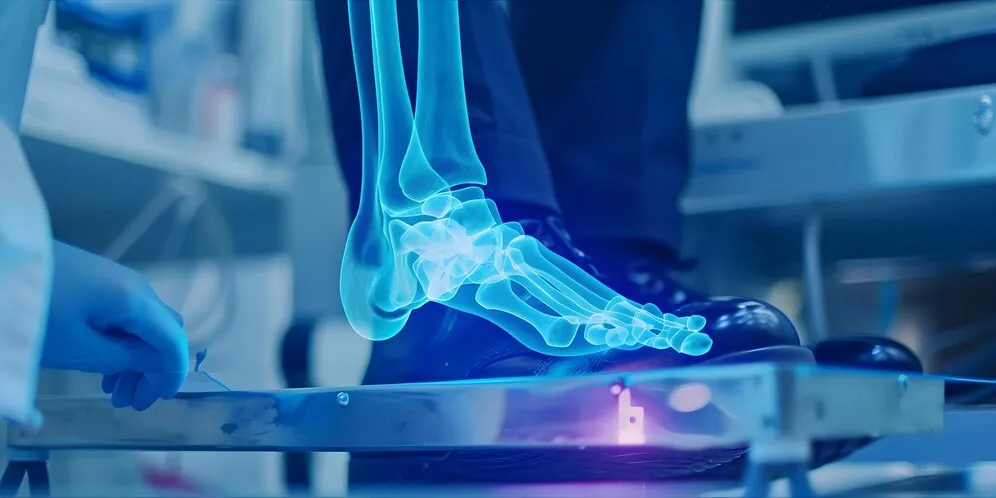The Future of Manufacturing: AI-Powered Automation in New York’s Factories
Author: Tyler Salaj
14 April, 2025
What if your factory could predict equipment failures before they happen, adjust production lines in real-time, and slash waste without human intervention? This isn’t science fiction—it’s happening now in New York’s manufacturing sector. AI-powered automation is revolutionizing production, making factories smarter, safer, and more efficient.
From AI-driven inventory systems that eliminate supply chain inefficiencies to collaborative robots (cobots) enhancing precision on the assembly line, AI is transforming how factories operate, AI is driving a new era of manufacturing. But how exactly is AI reshaping the factory floor? And what benefits does it bring to businesses and workers alike?
In this article, we’ll explore how AI-powered automation is transformation New Yorks factories—enhancing efficiency, improving worker safety, and enabling mass customization like never before. Whether you’re a manufacturer looking to stay ahead of the curve or just curious about the future of industry, this deep dive will give you valuable insights into the AI-driven factory revolution.
How New York’s Factories Leverage AI-Powered Automation?

New York’s factories are rapidly adopting AI-powered automation to enhance efficiency, safety, and competitiveness. Here’s how AI is transforming manufacturing across the state:
- Smart Inventory Management
AI-driven inventory systems predict optimal stock levels by analyzing historical data and market trends. This reduces overstocking, minimizes waste, and ensures seamless production. AI development companies for manufacturing in New York are helping manufacturers implement AI-integrated inventory management solutions. - Customization at Scale
AI-powered automation enables mass customization, allowing factories to adjust production lines in real-time. Apparel manufacturers, for example, can dynamically alter designs, sizes, and colors based on customer preferences while maintaining efficiency. - Enhanced Worker Safety
AI-equipped sensors monitor equipment and environmental conditions, detecting hazards such as overheating or toxic gas leaks. These systems can shut down machinery or alert workers to prevent accidents, improving workplace safety and reducing downtime. - Real-Time Production Monitoring
AI-powered dashboards provide real-time insights into production processes. By analyzing machine data, AI identifies inefficiencies and bottlenecks, helping manufacturers optimize operations and reduce costs. - Automated Material Handling
AI-driven robotics and automated guided vehicles (AGVs) streamline logistics, transporting materials across the factory floor without human intervention. This reduces labor costs and minimizes errors in supply chain management. - Sustainability and Waste Reduction
AI analyzes production processes to identify material wastage and inefficiencies. By optimizing resource usage, factories lower costs and reduce their environmental footprint, supporting sustainability goals. - Dynamic Pricing and Cost Optimization
AI helps manufacturers optimize pricing by analyzing market conditions and competitor strategies. Additionally, AI-driven cost analysis tools highlight areas for reducing expenses, such as energy usage and material sourcing. - Human-Machine Collaboration
Collaborative robots (cobots) work alongside human employees, assisting with repetitive or high-precision tasks. This enhances productivity and allows human workers to focus on complex problem-solving and creative tasks. - Faster Time-to-Market
AI automates processes like prototyping, testing, and quality assurance, accelerating the production cycle. This is crucial for industries like electronics and fashion, where rapid product launches are essential. Xorbix AI solutions are helping New York manufacturers stay ahead of the competition.
While AI is revolutionizing New York’s factories, adopting these technologies isn’t without hurdles. Let’s take a closer look at the challenges businesses face when integrating AI-powered automation—and how to overcome them.
Challenges
Embracing AI-powered automation isn’t just about upgrading machines-its about transforming the way factories operate While the benefits are undeniable, integrating AI into manufacturing comes with challenges that businesses must navigate to stay competitive.
If you are a manufacturer, you might be wondering: How do I ensure my team adapts to AI-drive processes? What are the costs and risks of automation? How do I integrate AI without disrupting current operations? These are real concerns, and you’re not alone in facing them.
Implementing AI-powered automation required strategic planning. You’ll need to consider workforce adaptation, which is how AI changes job roles. Integration complexity is how does the AI connects to the existing systems without causing downtime in the factories. Cost and ROI concerns are also important because AI can be pricey, but the long-term benefits can be worth it. The most important concern is the data security and reliability because of how AI relies on data.
This matters for your business because AI-powered automation isn’t just a trend-its the future of manufacturing. Companies that fail to adapt risk falling behind competitors who leverage AI to reduce costs, optimize production, and enhance worker safety. By understanding these challenges now, you can position your business to overcome them and reap the full benefits of AI-driven transformation.
Solutions
AI-Powered Automation in Manufacturing: Overcoming Challenges with Xorbix Solutions
Successfully integrating AI-powered automation in manufacturing requires more than just new technology—it demands strategic implementation to maximize efficiency and minimize disruption. At Xorbix Technologies, we help manufacturers navigate this transition through tailored AI solutions designed to address key industry challenges.
1. Workforce Training & AI Adoption
Challenge: Employees may resist AI due to fear of job displacement or lack of technical knowledge. Without proper training, AI adoption can face delays and inefficiencies.
Xorbix Solution: We provide customized AI training programs to upskill employees, ensuring smooth adaptation and collaboration between AI-driven automation and human workers.
Real-World Example: BMW introduced AI-powered quality control systems in its factories. By training employees to work alongside AI instead of replacing them, BMW improved defect detection accuracy while maintaining workforce stability.
2. Seamless Integration with Existing Systems
Challenge: Many manufacturers use legacy systems that are difficult to integrate with AI-driven solutions, leading to inefficiencies and compatibility issues.
Xorbix Solution: We develop API-based integrations and leverage edge computing to ensure seamless communication between AI models and existing manufacturing software.
Real-World Example: Siemens successfully integrated AI-driven predictive maintenance tools with its existing manufacturing infrastructure, reducing equipment failures by 30% without disrupting production.
3. Cost-Effective AI Implementation
Challenge: Full-scale AI deployment can be expensive, making it risky for manufacturers to invest in large projects without clear ROI.
Xorbix Solution: Instead of large-scale rollouts, we focus on small, high-impact AI pilots that deliver quick wins. Once these prove successful, we help businesses scale up AI solutions efficiently.
Real-World Example: A mid-sized automotive parts manufacturer used AI-powered robotics in a single assembly line before expanding across its production floors, reducing waste and increasing output by 15%.
4. Security & Compliance in AI Systems
Challenge: AI models handling sensitive manufacturing data are vulnerable to cyber threats, making security a top priority.
Xorbix Solution: We implement end-to-end encryption and data protection to safeguard critical business information and ensure regulatory compliance.
Real-World Example: Bosch integrated blockchain for AI-generated manufacturing data to prevent tampering and ensure data integrity, improving security in its smart factories.
5. Real-Time Monitoring & Machine Learning Optimization
Challenge: Without real-time insights, manufacturers struggle to detect inefficiencies and prevent machine failures before they impact production.
Xorbix Solution: Our AI-powered monitoring dashboards provide real-time analytics, allowing manufacturers to proactively identify and resolve issues. Machine learning optimizations help streamline processes and reduce downtime.
Real-World Example: General Electric uses AI-driven predictive analytics in its turbine manufacturing plants, cutting unplanned downtime by 20% and increasing operational efficiency.
Conclusion
The future of manufacturing isn’t coming—it’s already here. AI-powered automation is transforming New York’s factories, driving efficiency, reducing costs, and reshaping the workforce. From optimizing inventory and enhancing worker safety to enabling real-time production monitoring and human-machine collaboration, AI is driving factories toward greater efficiency and competitiveness. However, successful AI integration requires more than just adopting new technology; it demands a strategic approach to workforce training, seamless system integration, cost management, and data security.
By addressing these challenges head-on, manufacturers can unlock the full potential of AI-driven automation. With Xorbix AI solutions, businesses can implement automation with confidence, ensuring minimal disruption, maximized efficiency, and long-term success. The future belongs to those who innovate. Xorbix AI solutions can help your business lead this transformation with confidence. Are you ready to take the next step?
Read more on our related services:




